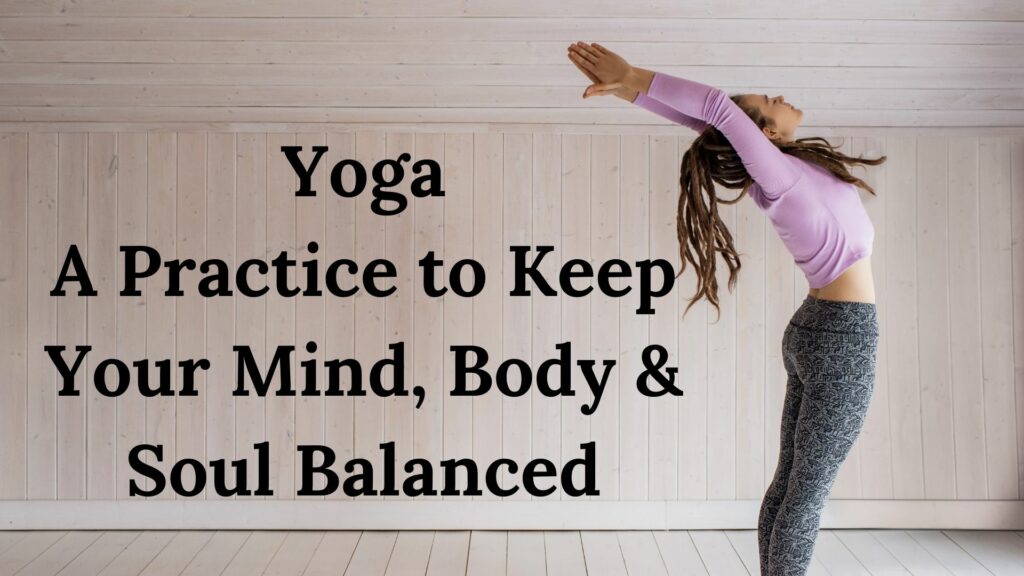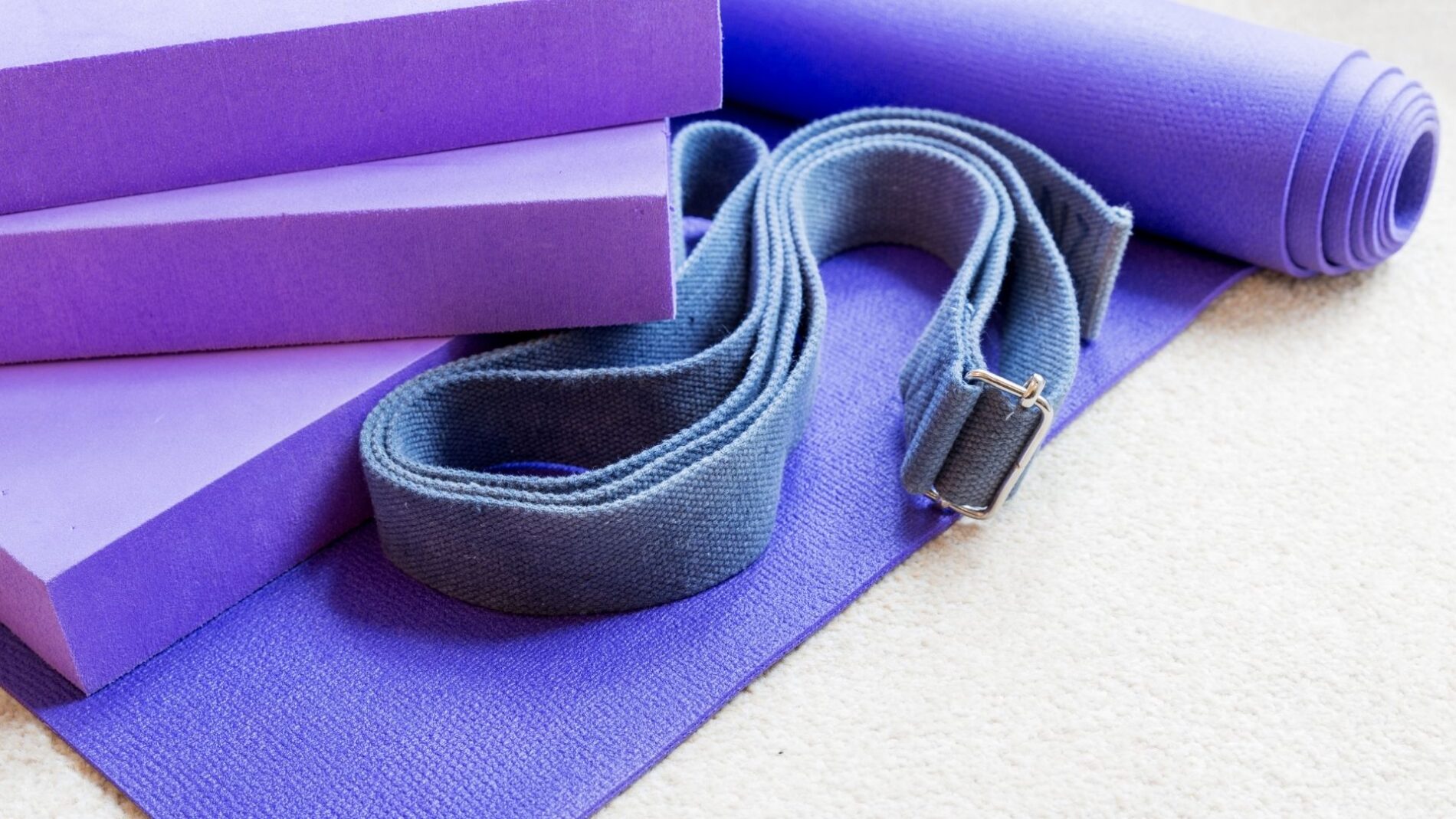Yoga is a practice that has been around for thousands of years, and anyone can practice it at any age. It’s also an amazing way to keep your mind, body, and soul in balance! In this blog post, we will discuss its benefits on both your physical health and mental wellbeing. You’ll learn about some common poses you can do for different parts of the body.
Contents
What is Yoga?

Yoga is an exercise that helps to keep your mind, body, and soul in balance. It involves stretching exercises, breathing techniques, and meditation. It can help you deal with stress more effectively. This teaches you how to let go of negative emotions like anger or sadness. Yoga has been around for thousands of years. But, it’s recently been getting a lot of attention in the Western world. People from all walks of life are beginning to discover how practicing yoga can improve their lives. There’s no doubt about it, it is an excellent way to both get and stay healthy!
Types of Yoga
There are many types of yoga, each with different benefits. The yoga you do depends on your physical fitness level and what you wish to achieve from the practice. You can also try various styles until you find one that works for you! Keep reading to learn more about some common forms of yoga.
Modified poses for beginners
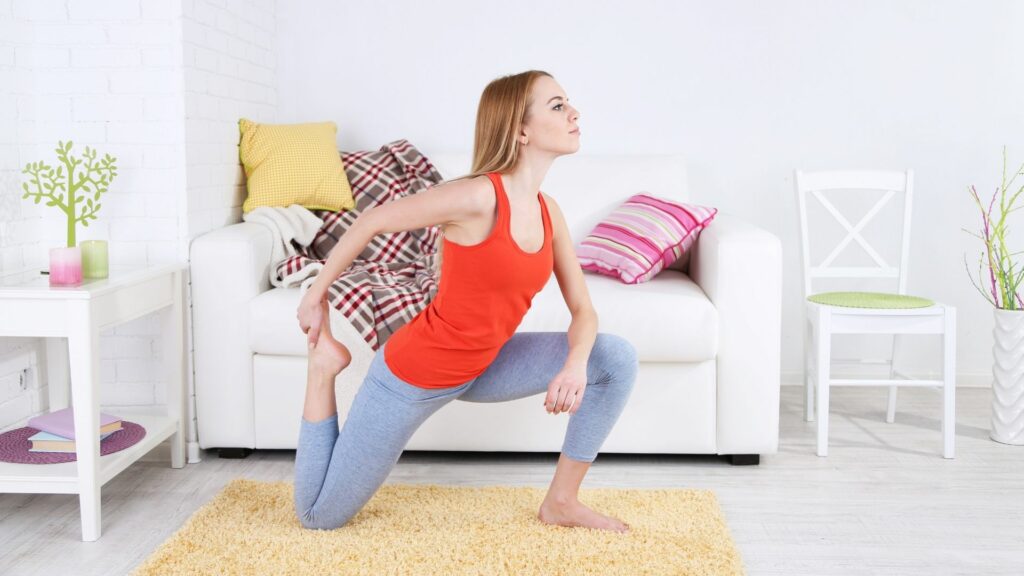
If you’re new to the practice of yoga, it may be overwhelming trying to learn all of these complicated poses. Luckily there are some modified versions that require less flexibility and strength! Here are two very common ones:
Cat cow pose
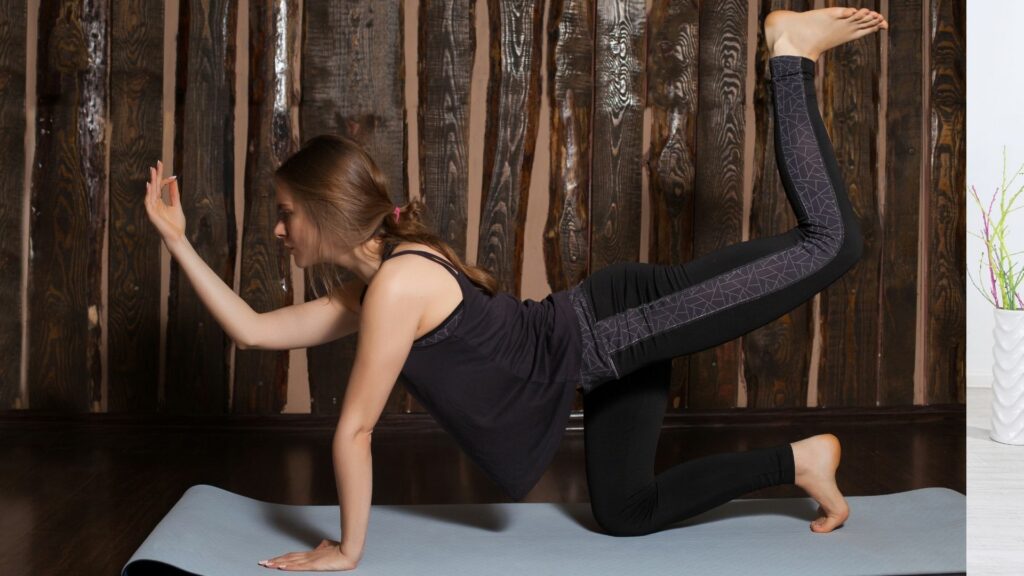
Start on your hands and knees with a neutral spine (slightly rounded). Inhale, and while you exhale arch your back up towards the ceiling. Repeat several times then switch to cow pose. On an inhale round your spine downwards looks forward and lengthen through your neck. On an exhale drop your belly down towards the floor as you push outwards with your hands so that they are slightly wider than shoulder-distance apart.
Child’s pose
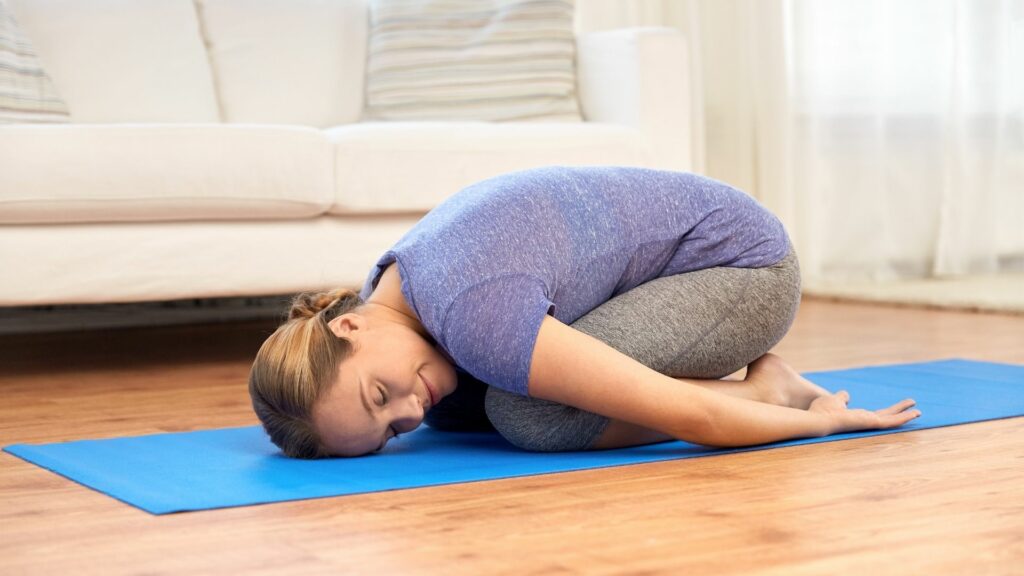
Start on your hands and knees with a neutral spine (slightly rounded). Inhale, and while you exhale bend forward from the hips so that your torso is between your thighs and arms outstretched in front of you. Try to round your back as much as possible for a deeper stretch while keeping your spine straight.
History
Yoga has been around for thousands of years. It was developed in India and dates back over 5000 years ago. The purpose behind meditation is to achieve higher levels of awareness, which can lead to enlightenment (think inner peace). But why would you want that? Well, the practice is known to improve many aspects of a person’s life. This is so because it helps in increasing flexibility, reducing anxiety and stress, improving sleep patterns, and just feeling healthier overall. In fact, a recent study showed that practicing yoga regularly can lead to increased brain-derived neurotrophic factor (BDNF), which is known to improve mood and reduce stress.
Props and Equipment
- Yoga mats can help you get into yoga poses better without straining your body too much. They also make some of the more difficult positions easier to achieve by offering support, balance, or stability for your entire body weight as opposed to only a portion of it. These props are essential equipment if you want to get the most out of your yoga practice.
- Yoga bolsters are pillows that you use to support different parts of your body when in a resting pose or simply while seated on the floor, which can be particularly helpful for people with injuries and other physical limitations.
- Blankets are also very useful props because they offer the same kind of support and comfort as bolsters. A person can also fold them and place them under his head (for example) while he is lying down.
- Yoga blocks are rectangular wooden or foam bricks that come in different thicknesses to match the height or length of a person’s arms when holding them against their body during yoga poses. Blocks are often used to support the hands or forearms in poses where they would otherwise be bearing too much weight, which can cause strain on your wrists and other parts of the body. The blocks also serve as a prop for beginners who want assistance while performing certain yoga positions.
- Yoga straps are very useful props that allow you to extend your reach when stretching, therefore enabling you to do difficult poses that would otherwise be impossible.
Benefits of Yoga
Yoga allows you to enjoy better overall health. As most people have heard by now, it is a type of exercise that can improve your physical and mental well-being in many ways. It has been proven scientifically that practicing certain types of exercises regularly will reduce stress levels, boost immunity against disease, lower the risk for various chronic illnesses, increase muscle strength, ease back pain, improve flexibility and agility, combat fatigue, etc.
- Flexibility: Another benefit of yoga is that it can improve your flexibility. They stretch out the muscles and tendons, which in turn increases their overall range of motion by stimulating blood flow through them during exercise.
- Posture: Practicing yoga also has many benefits for how you carry yourself throughout the day when not exercising. Postures like downward dog and half-moon can help your body maintain proper alignment when you’re standing or walking, which will improve posture and reduce the risk for injuries.
- Inner peace: Practicing yoga helps to bring inner peace by creating a connection between mind and body, allowing you to better focus on what is going on in your life at any given moment instead of being distracted by your thoughts.
- Self-awareness: Yoga also helps you to become more aware of yourself and familiarize yourself with all parts of your body, which can help improve self-esteem in the process.
- Strength: Yoga also helps you gain strength and tone muscles by engaging them during practice.
More Benefits
- Breathing: Another benefit of yoga is that it can help you breathe more deeply. It not only helps to regulate your breathing but also improves blood circulation.
- Balance: Practicing different types of yoga exercises will improve balance by strengthening the core muscles that surround your spine and pelvis. This stability in turn helps protect against injuries and falls.
- Stress: Yoga also offers an effective way to reduce stress levels, both during and after exercise.
- Heart health: Practicing yoga can also help to reduce your risk for cardiovascular disease, heart attack, and stroke.
- Concentration: When done correctly, yoga helps improve concentration skills by forcing you to focus on the present moment. This allows us to be more efficient with our time because we are focusing on what’s important.
- Arthritis: Yoga can also help with arthritis and other forms of joint pain.
- Injuries: Practicing yoga regularly will not only strengthen muscles. But, it can also help to prevent injuries from occurring in the first place. It is so because our bodies become better prepared for any physical activity by becoming more flexible and balanced.
- Sleep: As an added benefit, yoga can actually help you sleep better at night.
Risks of Yoga
There is a risk that by moving the body in ways it’s not used to, you could injure yourself. You should always consult with your physician before beginning any exercise program and be aware of how your body feels so you’ll know when something doesn’t feel right.
When done under the supervision of a qualified instructor, many types of yoga are quite mild and safe for people. It is unusual to suffer a significant injury while doing yoga. Sprains and strains are the most prevalent injuries suffered by persons who practice yoga. Before starting a yoga routine, clients should weigh the risk factors carefully with their doctor or healthcare professional if
Some individuals may find that certain yoga postures are hazardous because of their specific conditions. Beginners should avoid difficult exercises like Headstand, Lotus Pose, and deep breathing. When dealing with a medical issue, people should not substitute conventional medical treatment with it.
Conclusion
Yoga is an excellent way to keep your mind, body, and soul in balance. While there are some risks involved with practicing it, they can be controlled by consulting a doctor. If you do follow this advice, then you should have no problem enjoying the benefits of doing it!
Many individuals may find that certain yoga postures are hazardous because of their specific conditions. Beginners should avoid difficult exercises like Headstand, Lotus Pose, and deep breathing. When dealing with a medical issue, people should not substitute conventional medical treatment.
A Word From Mantra Care
Your mental health — your psychological, emotional, and social well-being — has an impact on every aspect of your life. Positive mental health essentially allows you to effectively deal with life’s everyday challenges. You can also check our subsidiary YogaMantra to know more about online yoga programs. We also provide an effective workplace meditation program.
At Mantra Care, we have a team of therapists who provide affordable online therapy to assist you with issues such as depression, anxiety, stress, relationship, OCD, LGBTQ, and PTSD. You can take our mental health test. You can also book a free therapy or download our free Android or iOS app.
